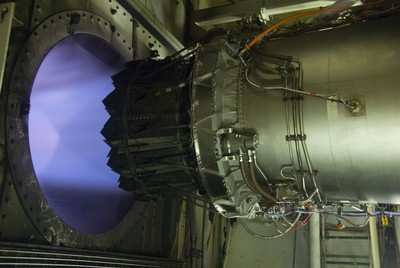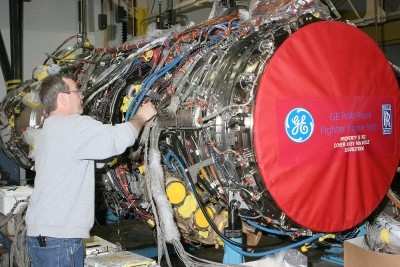House Armed Services Subcommittee Votes To Continue Funding ...
Under Certain Conditions. GE Says It Will Bear Costs
The F136 engine under development by Rolls Royce and GE simply
refuses to fade peacefully away, as members of a House Armed
Services Committee (HASC) subcommittee voted to re-open the engine
competition ... if the Pentagon has to ask Congress for more money
to complete the F135 engine it has selected for the F-35 JSF.

The defense budget passed in April did not contain any money for
the alternate engine, and the GE/Rolls Royce group was informed
that it should stop work on the project immediately. The Associated
Press reports that the projected savings from killing the program
are about $1 million per day.
But HASC subcommittee for air and land forces chairman Roscoe
Bartlett (R-MD) said that move was ill-advised. "Many of us believe
it was short-sighted for Congress to have failed to fund the F-35
competitive engine program for the remainder of the fiscal year,"
Bartlett said.But another committee member, Tom Rooney (R-FL)
called the vote a "cutesy way" to have funding for the engine
re-instated. "I am confident that either in the full House or the
Senate, it's not going anywhere," Rooney said.

Meanwhile, the GE/Rolls Royce Fighter Engine Team (FET)
announced Thursday it has committed to bear all costs for continued
development of the competitive F136 fighter engine for the Joint
Strike Fighter (JSF) through the end of fiscal year 2012.
This unique offer requires no appropriated government funding in
fiscal year 2012, nor does it hinge upon any financial commitment
from the government in 2013 or beyond. Under this agreement, the
FET would be provided access to the engines, components, and
testing facilities to continue development work. The Fighter Engine
Team believes that at a time of enormous fiscal stress, competition
is essential to saving taxpayer dollars. The independent Government
Accounting Office has estimated competition would save $20 billion
over the life of the program.

In a news release, GE said a competing engine is also important
to insure we have the best technology for our armed forces. The FET
proposal would preserve the $3 billion taxpayer investment in the
competing engine, which is 80% complete, while requiring no
additional costs to taxpayers.
This is the third time the FET has offered proposals to drive
acquisition reform. The first two proposals involved fixed-priced
concepts for early production JSF engines. Leaders of the House
Armed Services Committee have recognized the unique opportunity
that this self-funded F136 development program presents in driving
meaningful acquisition reform, and the Senate Committee on
Appropriations has called the F136 engine a “near model
program.” This is in sharp contrast to the performance of the
other JSF engine, which has had $3.4 billion in cost overruns.

GE Aviation CEO David Joyce stated, “Real acquisition
reform requires a contractor commitment to invest, compete, and be
measured on the merits of your performance. Our proposal
accomplishes these important objectives.”
General Electric Company CEO Jeff Immelt said, “We believe
so strongly in our engine and the need for competition in defense
procurement that we have committed to self-fund F136 development
costs for this fiscal year and next. Competition is vital to rein
in defense spending and will produce long-term savings.”
The Fighter Engine Team realizes this is a bold move, and there
are those who will mischaracterize this commitment based on their
own parochial interests.

This commitment is consistent with acquisition reform policy,
and will drive competition, improve contractor behavior, and reduce
costs. We hope this is the beginning of eliminating sole-source
contracting while driving contractor accountability.
Reuters reports that a Pentagon spokeswoman said simply that the
F136 program "had been terminated."
 Classic Aero-TV: VerdeGo Debuts VH-3 Hybrid-Electric Powerplant
Classic Aero-TV: VerdeGo Debuts VH-3 Hybrid-Electric Powerplant NTSB Prelim: Grumman American Avn. Corp. AA-5B
NTSB Prelim: Grumman American Avn. Corp. AA-5B ANN's Daily Aero-Linx (12.02.25)
ANN's Daily Aero-Linx (12.02.25) Aero-News: Quote of the Day (12.02.25)
Aero-News: Quote of the Day (12.02.25) Aero-News: Quote of the Day (12.03.25)
Aero-News: Quote of the Day (12.03.25)







